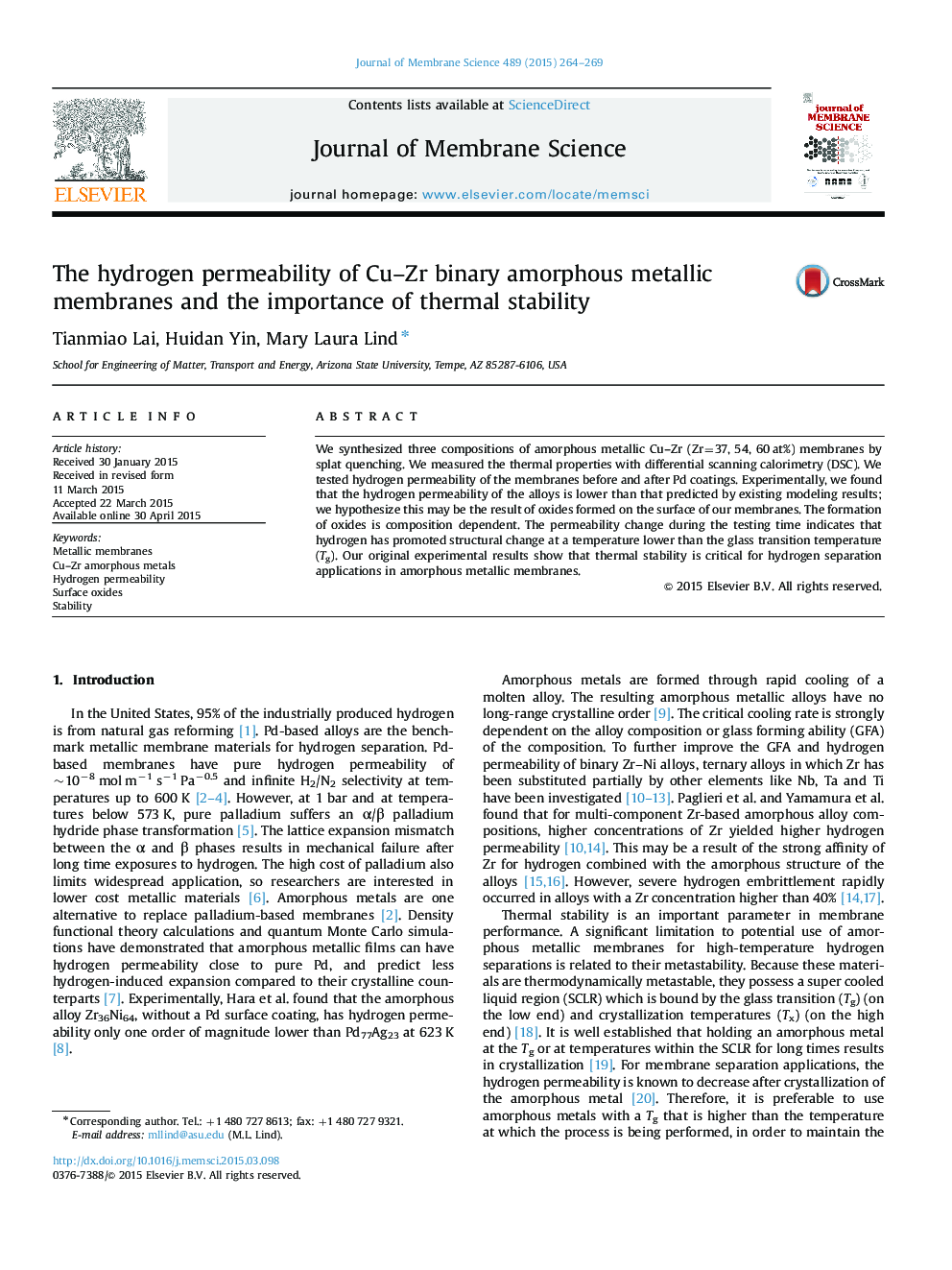| Article ID | Journal | Published Year | Pages | File Type |
|---|---|---|---|---|
| 632912 | Journal of Membrane Science | 2015 | 6 Pages |
•We fabricated Cu–Zr (Zr%=37, 54, 60) amorphous metallic membranes by splat quenching.•We experimentally tested the hydrogen permeability of Cu–Zr membranes.•Surface oxides counteract the catalytic effect of Pd on surface.•The presence of hydrogen promoted crystallization at temperatures lower than Tg.
We synthesized three compositions of amorphous metallic Cu–Zr (Zr=37, 54, 60 at%) membranes by splat quenching. We measured the thermal properties with differential scanning calorimetry (DSC). We tested hydrogen permeability of the membranes before and after Pd coatings. Experimentally, we found that the hydrogen permeability of the alloys is lower than that predicted by existing modeling results; we hypothesize this may be the result of oxides formed on the surface of our membranes. The formation of oxides is composition dependent. The permeability change during the testing time indicates that hydrogen has promoted structural change at a temperature lower than the glass transition temperature (Tg). Our original experimental results show that thermal stability is critical for hydrogen separation applications in amorphous metallic membranes.
